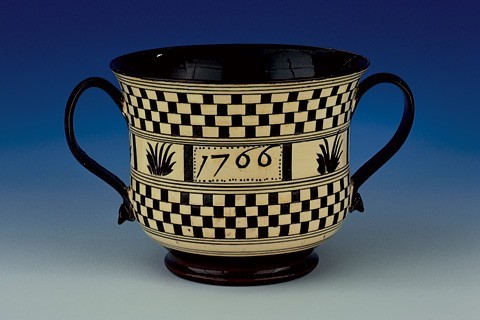
Two-handled cup, Staffordshire, dated 1766. Slipware. H. 7 3/8". (Courtesy, Colonial Williamsburg Foundation.) White slip was applied to the red-bodied thrown form. The sgraffito decoration was done by hand on a lathe and augmented with freehand carving of the floral decoration and the date.
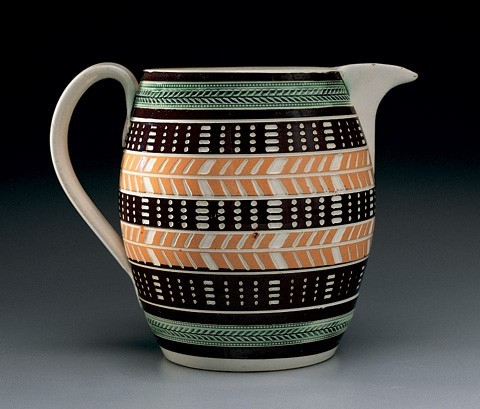
Jug, Great Britain, ca. 1810. Pearlware. H. 6 3/8". (All objects from the Jonathan Rickard Collection unless otherwise noted; photos, Gavin Ashworth.) The jug has toffee-colored and black slip bands and green-glazed rouletted bands, the central area decorated with designs cut through the slip on an engine-turning lathe, using only the edge cam to reveal the body color. The extruded strap handle has press-molded foliate terminals.
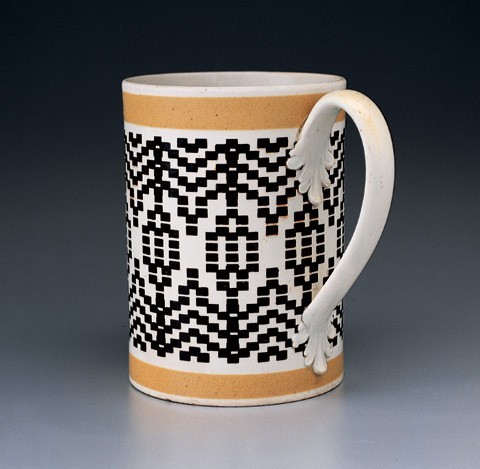
Mug, Great Britain, ca. 1795. Creamware. H. 5 15/16". A quart mug with an engine-turned pattern cut into the pot’s outer body and dipped with black slip, then scraped away to reveal only the slip remaining in the recesses. The extruded strap handle has press-molded foliate terminals.
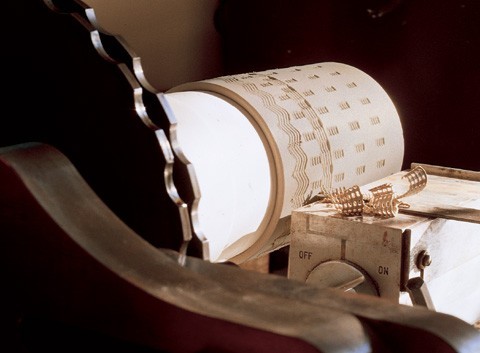
A geometric pattern being cut into a leather-hard mug mounted on Donald Carpentier’s engine-turning lathe.
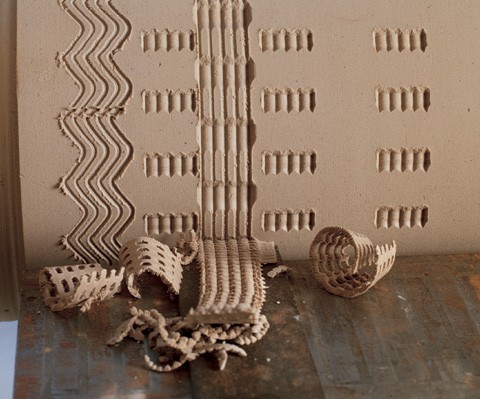
A detail of a leather-hard mug body as it is being cut. This is one of Carpentier’s earliest attempts at engine turning on the lathe he had built for this purpose. A modified early engine-turning lathe at the Wedgwood Museum in Barlaston, Staffordshire, and an experimental example at the Nicholas Mosse Pottery in Kilkenny, Ireland, are the only other engine-turning lathes in existence for pottery use.

Jug, Great Britain, ca. 1780. Creamware. H. 5 5/8". Baluster-form jug with a press-molded snip (pouring lip) and a simple extruded strap handle. The rim has a green-glazed reeded band above a field of marbled and combed colored slip.
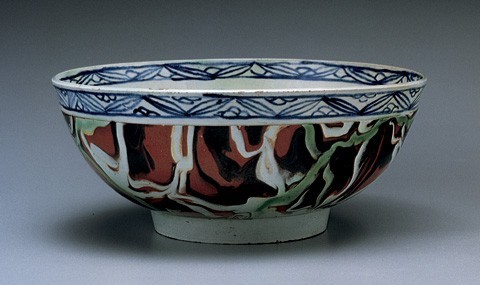
Bowl, Great Britain, ca. 1775. Pearlware. D. 6". Hemispherical bowl in the Chinese shape, the rim painted inside and out in a familiar chinoiserie pattern above a field of marbled slip. This is one of a small group of known examples where areas of the white slip in the marbling have been enhanced with green glaze, much as examples of earlier solid agate possess areas of blue glaze. Sherds from the William Greatbatch factory site in Fenton, Stoke-on-Trent, have the same combination of blue-painted and marbled-slip decoration, but differ considerably in appearance from this example.
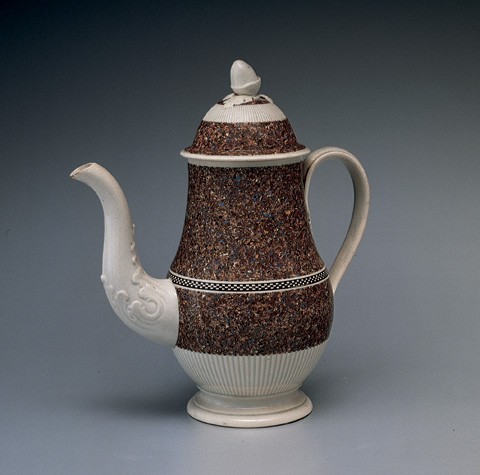
Coffee pot and cover, Great Britain, ca. 1785. Pearlware. H. 10 5/8 ". Baluster-form body and cover having vertical reeding created on an engine-turning lathe, along with inlaid agate—tiny bits of different-colored clay adhered to the body with slip and turned smooth. The body also has a band of black slip-filled checkered rouletting, a press-molded spout, and an extruded strap handle with foliate terminals; the cover has a tipped acorn knop.
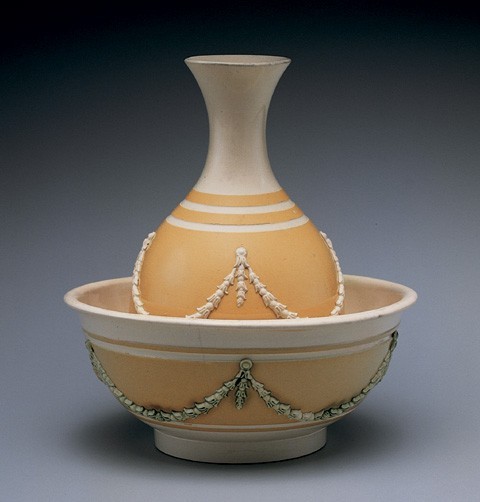
Water bottle and basin, Great Britain, ca. 1775. Creamware. H. 10". This bottle and basin set was dipped in pale yellow slip and cut away in horizontal bands on the lathe. The basin has a rolled rim below which are sprigged bellflower swags touched with green glaze (copper oxide). The bottle has matching bellflower swags without the green glaze.
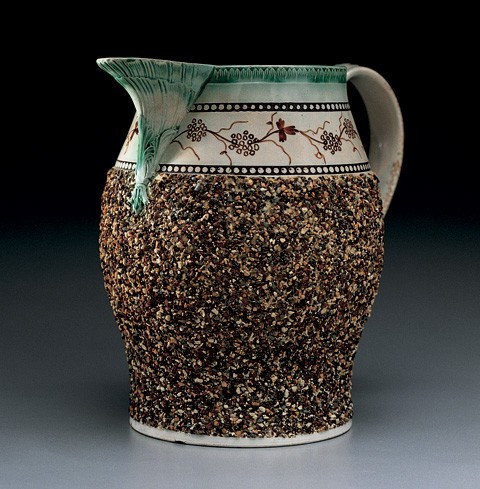
Jug, probably Welsh, ca. 1795. Pearlware. H. 6 7/8". Jug with green-glazed molded rim and press-molded snip, two bands of inlaid rouletted beads, painted vines, and a field of tiny clay fragments beneath the clear lead glaze. Donald Towner referred to this type of decoration as “encrusted.” Nearly matching sherds from the Cambrian Pottery site, Swansea, Wales, are in the Swansea Museum.

Bowl, Great Britain, 1800–1810. Pearlware. D. 7 1/4". Hemispherical bowl banded with black and rust-colored slips below a reeded band with scarcely encountered yellow glazing. The broader slip field has been embellished with mocha decoration, a black-colored acidic infusion touched to the still-wet slip, where it nearly instantaneously branches out in fine traceries.
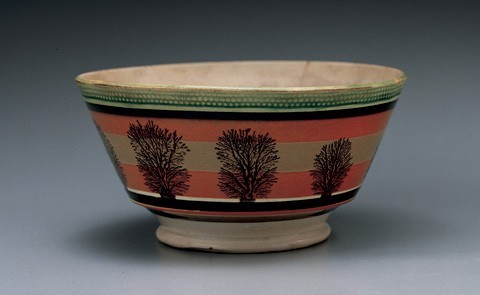
Bowl, Great Britain, ca. 1820. Pearlware. D. 6 1/2". London-shape bowl, similar to the bowl illustrated in fig. 11 except that the rouletted rim has the more typical green glaze and the mocha decoration extends over different-colored slip bands.
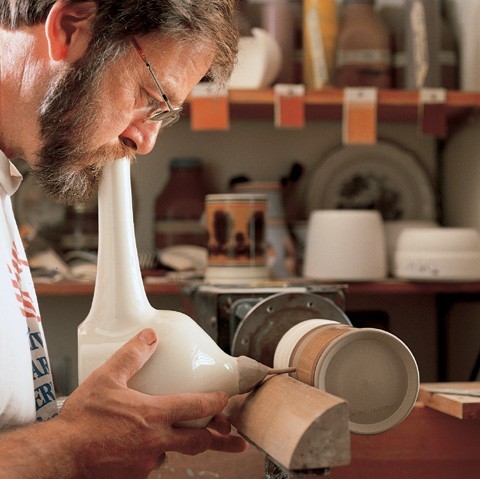
Period descriptions of turners applying slip decoration often refer to the use of a “blowing bottle” to apply courses of colored thin bands. Here, Carpentier demonstrates the process using a blowing bottle that he made based on period references.
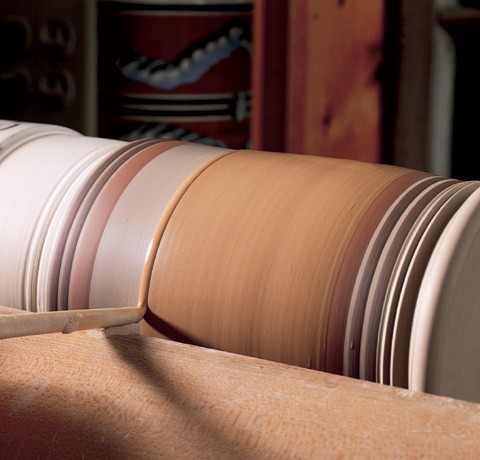
Detail of the application of a single-color string band of slip through the blowing bottle.
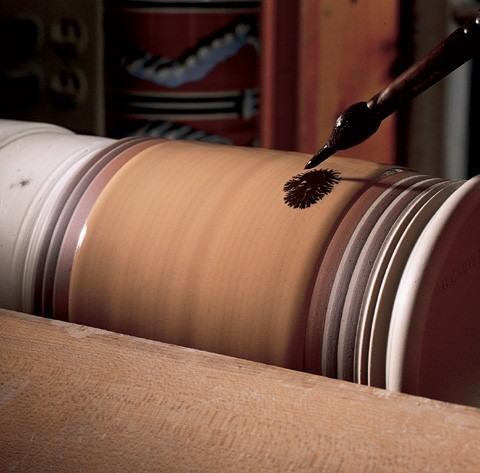
On the mug body banded with the blowing bottle, Carpentier applies mocha decoration. The acidic solution referred to in period documents as “mocha tea” spreads in a random branching pattern on the moist slip.
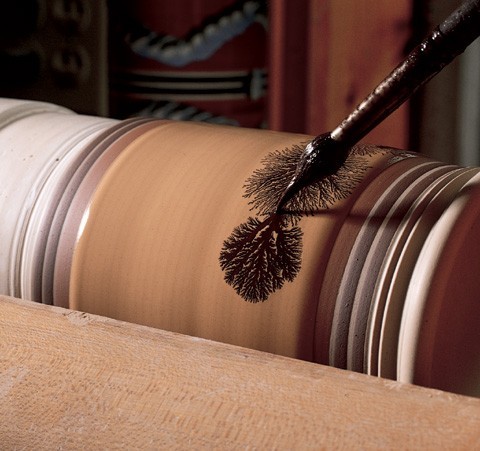
A second drop of “mocha tea” is added as the mug is rotated slowly on the lathe.
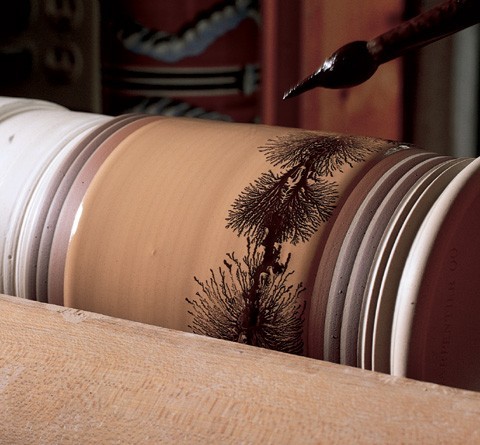
The completed rotation of the mug.
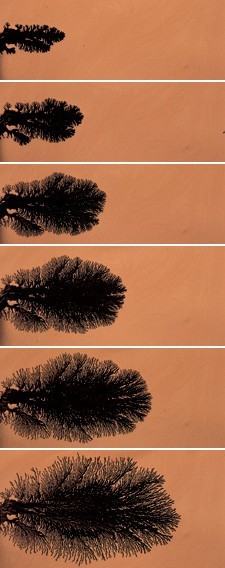
Detail of the mocha process from start to finish. Elapsed time is generally two to three seconds.
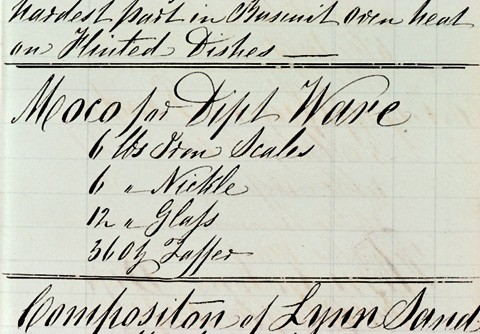
“Moco” formula. Excerpt from a nineteenth-century potter’s recipe book attributed to the Godwin pottery, Staffordshire. (Courtesy, Colonial Williamsburg Foundation.)
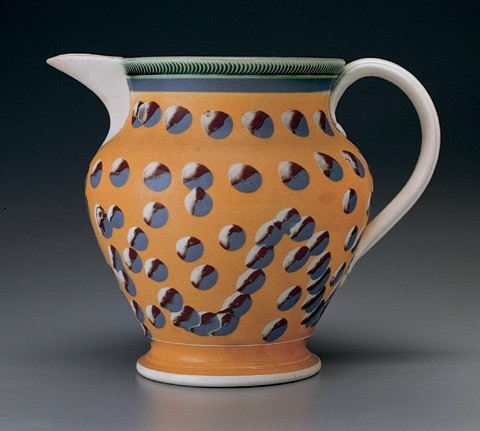
Jug, Great Britain, ca. 1835. Pearlware. H. 6 3/4". Jug with tricolored cat’s-eye and cable decoration below a blue slip band and a green-glazed band of rouletting. The extruded strap handle has foliate terminals.
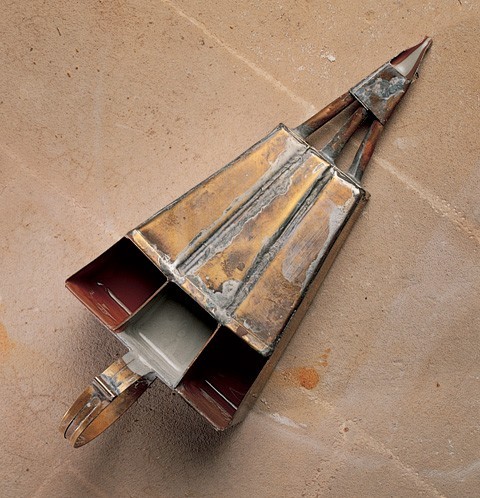
One of Carpentier’s three-chambered slip cups showing the three compartments filled with slip. Period examples were made of tinplate or earthenware.
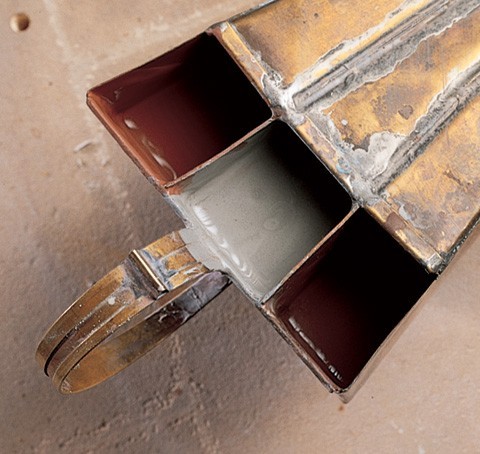
Detail of the chambers of the slip cup illustrated in fig. 21 showing three colors of slip.

Detail of the tip of the slip cup illustrated in fig. 21.
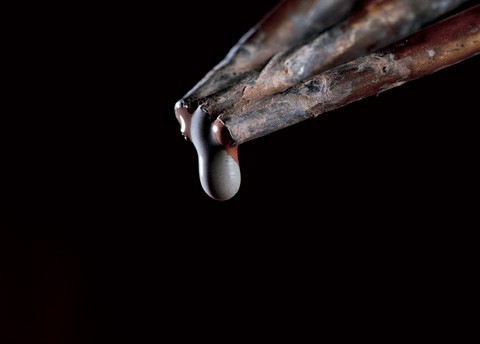
A close-up view of the three colors of slip as they emerge from the three tubes of the slip cup. They form a single droplet, yet maintain the individual colors that will compose any of the types of decoration for which this tool is used.
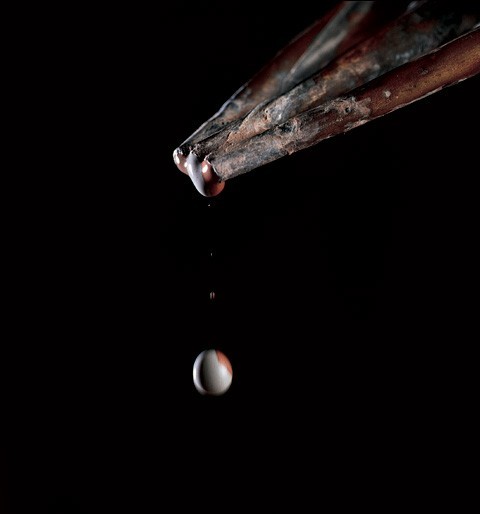
The tricolored droplet falling from the slip cup. Note the smaller, secondary droplet falling behind.
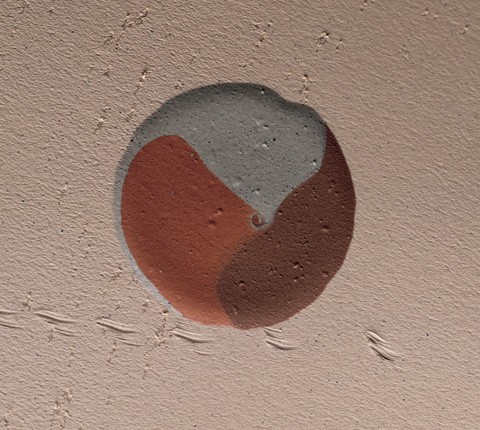
Close-up view of a single cat’s-eye, immediately after falling as a tricolored droplet onto a dry surface. When applied to a fairly dry slip field, the moisture in the slip is quickly absorbed by the underlying clay body, fixing the decoration in place. A secondary cat’s-eye is visible in the center of the larger one. This is from the secondary droplet shown in fig. 24. Period cat’s-eye decorations all seem to have this characteristic as well.
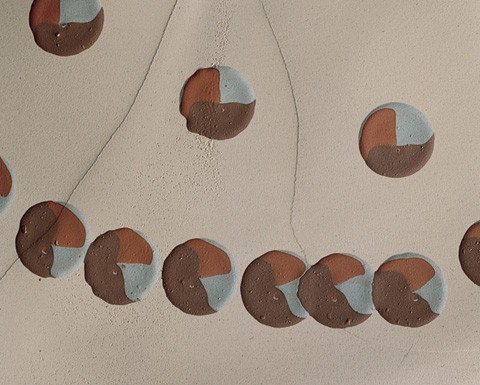
Single cat’s-eyes being dripped and starting to overlap.

When cat’s-eyes are quickly overlapped in a continuous line, they form the decoration known to collectors as “earthworm.” The same decoration is referred to in period documents as “cable.” This shows typical cable decoration before the moisture has been absorbed. In practice, conditions varied so that, for example, too much moisture in the body slowed the absorption rate, allowing the top layer of slip to continue moving as the object rotated on the lathe. Likewise, if slip dried too quickly, a quill might become blocked and only two colors would appear. Randomness played a part in the final appearance of these pots.
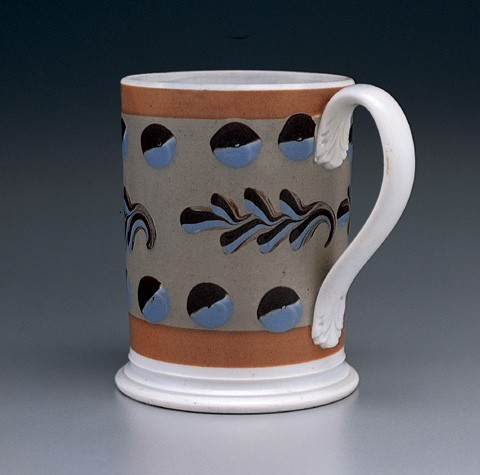
Mug, Great Britain, ca. 1825. Pearlware. H. 4 3/4". Pint mug with tricolored cat’s-eyes and twigs produced with a three-chambered slip cup. While the blue and black slips appear obvious, white slip is barely present in the designs. This deficiency may be the result of the white slip drying and partially clogging the tube, allowing little to flow onto the pot’s surface. Alternatively, the white slip may have been more fluid and therefore ran out sooner than the other two colors.
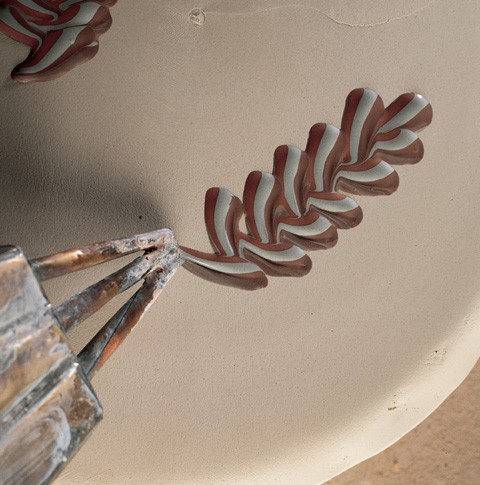
By dragging the tips of the three gathered quills in a series of connecting opposing motions, Carpentier replicates the pattern known to collectors as “twig.”
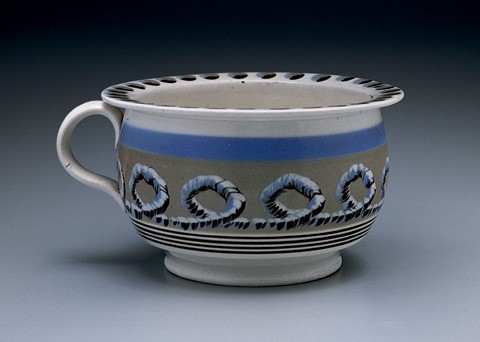
Chamber pot, Staffordshire, 1853–1859. Pearlware. D. 8 3/4". Chamberpot decorated with cat’s-eye and cable in a more subdued palette, indicating a later date of manufacture. The exterior decoration, in fact, matches sherds at the Potteries Museum, Stoke-on-Trent, from the Podmore, Walker & Co. factory site in Tunstall, Stoke-on-Trent.
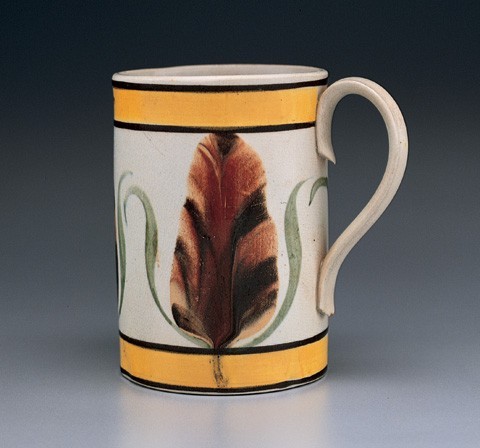
Mug, Great Britain, ca. 1810. H. 4 3/4". Mug with brown slip bands enclosing yellow-glazed bands usually found on a rouletted surface but seen here on a plain surface. The mug has been further decorated by dipping it into a small pool of multicolored slip. The action of pulling the mug away from the pool of slip caused the slip to pull toward the center of the patch. When the mug was turned upright, the colors flowed toward the bottom. Further embellishment was added in the form of painted fronds on either side of each of the three fans on this rare mug.

In creating the dipped fan pattern, the object to be decorated was dipped partway into a pool of striped or marbled slip.

Pulling the pot out of the slip caused the wet slip to maintain contact in a form of capillary action, resulting in the heaviest concentration of slip appearing in the center of the pattern. When the pot was placed in an upright position, if the slip was wet enough, gravity would cause the wettest portion to stream downward, creating the tail or stem usually seen on these examples.
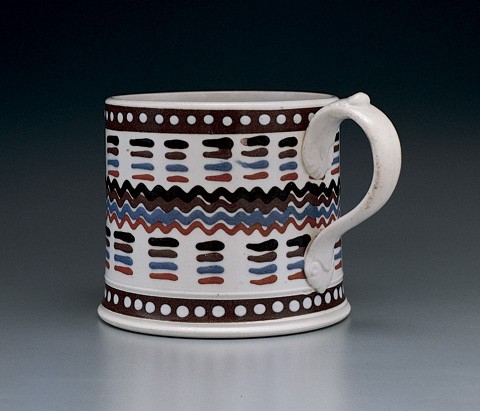
Mug, probably Scotland, ca. 1840. Pearlware. H. 4 1/8". Pearlware porter mug with several unusual features: the handle is press molded, as opposed to the normal extrusion; the interior is embellished with a painted, press-molded, life-sized frog; the thin brown slip bands near the rim and foot are decorated with white slip dots; and the exterior is trailed with four colors of slip, requiring a four-chambered slip pot. Most multiple, parallel trailed lines of slip found on dipped wares are a single color. To date, the only factory known to be associated with this type of decoration is that of John Thomson at the Annfield Pottery, Glasgow (1812–1884).
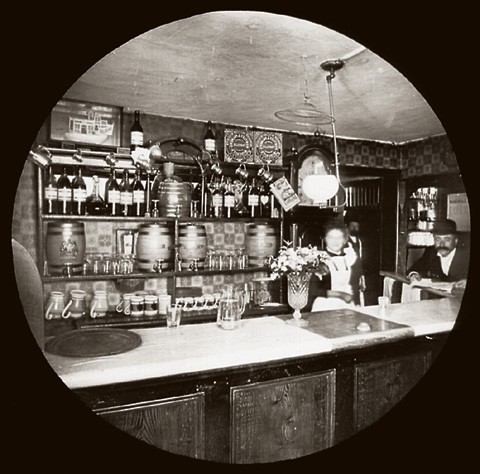
Glass slide of British pub showing mocha tankards, 1890–1910. (Courtesy, Donald Carpentier.)

Mug, probably Bristol, ca. 1915. Whiteware. H. 4 7/8". Whiteware pint mug with mocha decoration in an unusual diagnostic color. The broad slip band on mugs of this period is usually in the tan- to olive-colored range. The blue and black bands are standard, though the sequence may vary from maker to maker. In this case, the manufacturer complied with prevailing English law requiring vessels of specific capacity to be so marked and verified by the weights and measures oYcials. The mark is sandblasted through the glaze and reads “gr 490,” followed by either a “5” or an “s.” The “gr” signifies that George V (1910–1936) or George VI (1936–1952) was on the throne; undoubtedly it was the former, inasmuch as most mocha production had stopped by the 1920s. The “490” represents the Weights and Measures District of Bristol City. Above the verification mark is the printed mark of the Bell Hotel, Radstock, whose bar this mug was made for. Radstock is a small town south of the cathedral city of Wells and southeast of Bristol. Radstock was either within the Weights and Measures District of Bristol City or the verification took place at the factory.
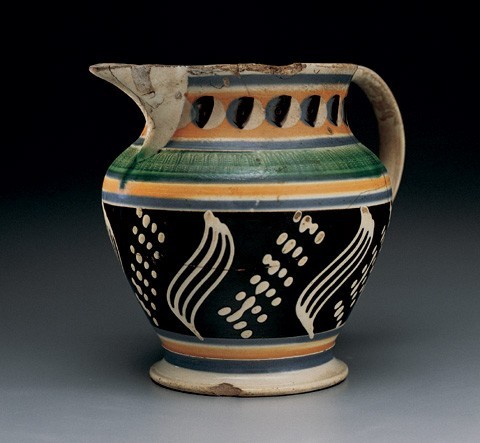
Jug, Staffordshire, probably Enoch Wood, ca. 1835. Pearlware. H. 7". Jug with cat’s-eye and trailed-slip decoration and an unusual green-glazed, rouletting pattern. This jug has a history of ownership in Great Barrington, Massachusetts.
